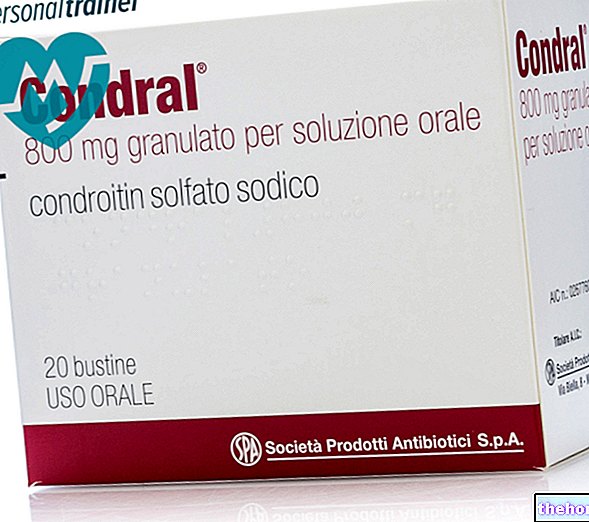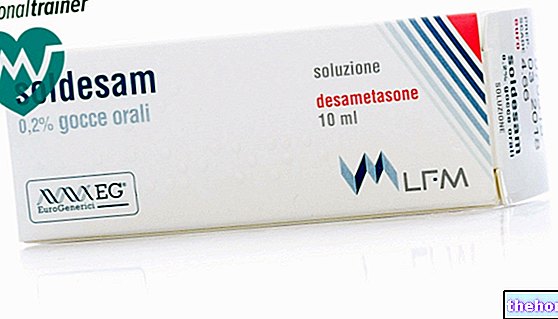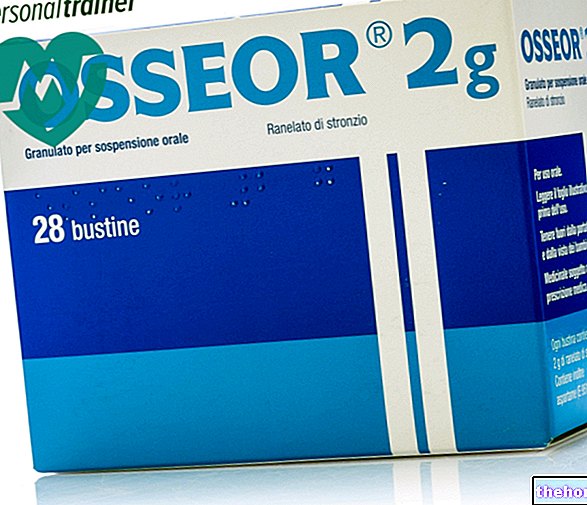Active ingredients: Nepafenac
NEVANAC 1 mg / ml eye drops, suspension
Nevanac package inserts are available for pack sizes:- NEVANAC 1 mg / ml eye drops, suspension
- NEVANAC 3 mg / ml eye drops, suspension
Why is Nevanac used? What is it for?
NEVANAC contains the active substance nepafenac and belongs to a group of medicines called non-steroidal anti-inflammatory drugs (NSAIDs).
NEVANAC is for use by adults
- to prevent and relieve eye pain and inflammation following cataract surgery
- to reduce the risk of macular edema (swelling in the back of the eye) following cataract surgery in diabetic patients.
Contraindications When Nevanac should not be used
Do not use NEVANAC
- if you are allergic to nepafenac or any of the other ingredients of this medicine (listed in section 6)
- if you are allergic to other non-steroidal anti-inflammatory drugs (NSAIDs).
- if you have suffered from asthma, skin allergy, or severe nose inflammation using other NSAIDs. Examples of NSAIDs are: acetylsalicylic acid, ibuprofen, ketoprofen, piroxicam and diclofenac.
Precautions for use What you need to know before taking Nevanac
Talk to your doctor, pharmacist or nurse before using NEVANAC:
- if you bruise easily or have bleeding problems or have had any in the past
- if you have any other eye problems (eg an "eye infection) or if you are using other ophthalmic medicines (especially topical steroids)
- if you have diabetes
- if you suffer from rheumatoid arthritis
- if you have had repeated eye surgery in a short period of time.
Avoid exposure to sunlight during treatment with NEVANAC.
The use of contact lenses is not recommended after cataract surgery. Your doctor will be able to tell you when you can start using contact lenses again (see also "NEVANAC contains benzalkonium chloride")
Children and adolescents
Do not give this medicine to children and adolescents under 18 years as the safety and efficacy in this population have not been established.
Interactions Which drugs or foods may change the effect of Nevanac
Tell your doctor or pharmacist if you are taking or have recently taken any other medicines.
NEVANAC can affect or be affected by other medicines you are using, including other eye drops to treat glaucoma.
Also tell your doctor if you are taking medicines that reduce blood clotting (warfarin) or other NSAIDs. They can increase the risk of bleeding.
Warnings It is important to know that:
Pregnancy and breastfeeding
If you are pregnant, or could become pregnant, ask your doctor for advice before using NEVANAC. Women of childbearing potential are advised to use effective contraceptive measures while using NEVANAC.
The use of NEVANAC is not recommended during pregnancy.
Do not use NEVANAC unless specifically directed by your doctor.
If you are breastfeeding, NEVANAC may pass into breast milk. However, no effects on breastfed infants are expected. NEVANAC can be used during breastfeeding.
If you are pregnant, think you may be pregnant or are planning to have a baby, ask your doctor or pharmacist for advice before using this medicine.
Driving and using machines
Do not drive or use machines until you can see clearly again. Your vision may momentarily blur immediately after using NEVANAC.
NEVANAC contains benzalkonium chloride
The preservative in NEVANAC, benzalkonium chloride, can cause discoloration of soft contact lenses and cause eye irritation and corneal side effects (problems with the surface of the eye). If your doctor confirms that you can use contact lenses again, remember to remove them before applying the medicine and wait at least 15 minutes before reapplying them.
Dose, Method and Time of Administration How to use Nevanac: Posology
Always use this medicine exactly as your doctor has told you. If in doubt, consult your doctor or pharmacist.
Use NEVANAC for your eyes only. Do not ingest or inject.
The recommended dose is
One drop in the affected eye (s), three times a day - morning, noon and evening. Use the medicine at the same time each day.
When to take it and for how long
You start one day before cataract surgery and apply it on the day of surgery as well.
After that, use it for as long as your doctor tells you. It can be up to 3 weeks (to prevent and relieve eye pain and inflammation) or 60 days (to prevent the development of macular edema) after the operation.
How to use NEVANAC
Wash your hands before starting
- Shake well before use.
- Unscrew the bottle cap.
- After removing the cap, if the safety ring has come loose, remove it before using the product.
- Take the bottle in your hand, between your thumb and other fingers, keeping it pointing downwards.
- You tilt your head back.
- Pull the lower lid down with a clean finger, so as to form a "pocket" between the lid and the eye into which the drop of eye drops will fall (figure 1).
- Bring the tip of the bottle close to your eye. If it helps you, you can do it in front of a mirror.
- Do not touch your eye, eyelid, surrounding areas or other surfaces with the dropper: the drops may become infected.
- Press lightly on the bottom of the bottle so that one drop of NEVANAC comes out at a time (figure 2).
- It does not compress the bottle: it has been specially designed so that a slight pressure on the bottom is sufficient (figure 2).
If you need to put the drops in both eyes, repeat these steps for the other eye as well. Close the bottle carefully immediately after use.
If a drop misses your eye, try again.
If you use another eye drop at the same time, wait at least five minutes between using NEVANAC and applying the other eye drops.
If you have forgotten to use NEVANAC
Apply a single dose as soon as you notice. If it is shortly before your next dose, skip the missed dose and resume your usual dose. Do not use a double dose to make up for the forgotten dose. Do not use more than one drop in each affected eye 3 times a day.
If you stop using NEVANAC
Do not stop taking NEVANAC without first checking with your doctor. You can usually continue to use the drops, unless the side effects are serious. If you are worried, talk to your doctor or pharmacist.
If you have any further questions on the use of this medicine, ask your doctor, pharmacist or nurse.
Overdose What to do if you have taken too much Nevanac
If you have instilled more NEVANAC than necessary, immediately wash your eye with lukewarm water. Do not use the drops again until it is time for your next dose.
Side Effects What are the side effects of Nevanac
Like all medicines, this medicine can cause side effects, although not everybody gets them.
There may be an increased risk of adverse corneal reactions (ocular surface problems) in the case of:
- complicated eye surgeries
- repeated eye surgeries in a short amount of time
- some ocular surface disorders, such as inflammation or dry eye
- some general diseases, such as diabetes or rheumatoid arthritis
Contact your doctor immediately if your eyes become red or painful when using the eye drops. This could be the result of "inflammation of the ocular surface with or without loss or damage to cells, or" inflammation of the eye area. color of the eye (iritis). These side effects have been seen in up to 1 in 100 people.
The following side effects have been observed with NEVANAC 1 mg / ml eye drops, suspension or NEVANAC 3 mg / ml eye drops, suspension, or both:
Uncommon side effects (may affect up to 1 in 100 people)
- Effects on the eye: inflammation of the eye surface with or without cell damage, foreign body sensation in the eye, crusting or drooping of the eyelid
Rare side effects (may affect up to 1 in 1,000 people)
- Effects in the eye: Iris inflammation, eye pain, eye discomfort, dry eye, eyelid swelling, eye irritation, eye itching, eye discharge, allergic conjunctivitis (eye allergy), increased tear production, surface deposits of the eye, fluid or swelling in the back of the eye, redness of the eye.
- General side effects: dizziness, headache, allergic symptoms (swelling of the eyelid caused by allergy), nausea, inflammation, redness and itching of the skin.
Undesirable effects with frequency not known (frequency cannot be estimated from the available data)
- Effects on the eye: damage to the surface of the eye such as thinning or perforation, impaired healing of the eye, scarring on the ocular surface, clouding, decreased vision, eye swelling, blurred vision.
- General side effects: vomiting, increased blood pressure.
Reporting of side effects
If you get any side effects, talk to your doctor or pharmacist. This includes any possible side effects not listed in this leaflet. You can also report side effects directly via the national reporting system listed in Appendix V. By reporting side effects you can help provide more information on the safety of this medicine.
Expiry and Retention
Keep this medicine out of the sight and reach of children.
Do not use this medicine after the expiry date which is stated on the bottle and carton after EXP. The expiry date refers to the last day of the month.
Do not store above 30 ° C.
Throw away the bottle 4 weeks after first opening in order to prevent infections. Write the date you opened the bottle on the bottle and box label in the space provided.
Do not throw any medicines via wastewater or household waste. Ask your pharmacist how to throw away medicines you no longer use. This will help protect the environment.
Deadline "> Other information
What NEVANAC contains
- The active ingredient is nepafenac. One ml of suspension contains 1 mg of nepafenac.
- The other ingredients are: benzalkonium chloride (see section 2), carbomer, sodium edetate, mannitol, purified water, sodium chloride and tiloxapol. Small amounts of sodium hydroxide and / or hydrochloric acid are added to maintain normal acidity values (pH values).
What NEVANAC looks like and contents of the pack
NEVANAC is a liquid (light yellow to light orange suspension) distributed in a pack containing a 5 ml plastic bottle with a screw cap.
Source Package Leaflet: AIFA (Italian Medicines Agency). Content published in January 2016. The information present may not be up-to-date.
To have access to the most up-to-date version, it is advisable to access the AIFA (Italian Medicines Agency) website. Disclaimer and useful information.
01.0 NAME OF THE MEDICINAL PRODUCT -
NEVANAC 1 MG / ML EYE DROPS, SUSPENSION
02.0 QUALITATIVE AND QUANTITATIVE COMPOSITION -
1 ml of suspension contains 1 mg of nepafenac.
Excipient (s) with known effect:
Each ml of suspension contains 0.05 mg of: benzalkonium chloride.
For the full list of excipients, see section 6.1.
03.0 PHARMACEUTICAL FORM -
Eye drops, suspension.
Light yellow to light orange uniform suspension, pH 7.4 (approximately).
04.0 CLINICAL INFORMATION -
04.1 Therapeutic indications -
NEVANAC 1 mg / ml is indicated in adults for:
- The prevention and treatment of postoperative pain and inflammation associated with cataract surgery.
- The reduction of the risk of postoperative macular edema associated with cataract surgery in diabetic patients (see section 5.1).
04.2 Posology and method of administration -
Dosage
Adults and the elderly
For the prevention and treatment of pain and inflammation, the dose is 1 drop of NEVANAC in the conjunctival sac of the affected eye (s) 3 times a day starting on the day before cataract surgery, continuing into the day of the surgery and for the first 2 weeks in the postoperative period. The treatment can be extended to the first 3 weeks in the postoperative period, according to the doctor's instructions. Administer an additional drop 30-120 minutes before surgery.
For the reduction of the risk of postoperative macular edema following cataract surgery in diabetic patients, the dose is 1 drop of NEVANAC in the conjunctival sac of the "affected eye (s) 3 times a day starting the day before" cataract surgery, continuing on the day of surgery and up to 60 days of the postoperative period, as directed by the physician. An additional drop should be administered 30-120 minutes before surgery.
Special populations
Patients with hepatic or renal impairment
NEVANAC has not been studied in patients with hepatic disease or renal impairment. Nepafenac is mainly eliminated by biotransformation and the level of systemic exposure following topical ophthalmic administration is very low. No dose modification is warranted in these patients.
Pediatric population
The safety and efficacy of NEVANAC in children and adolescents have not been established. No data available. Its use is not recommended in these patients until further data become available.
Elderly patients
Overall, no differences in safety and efficacy were observed between elderly and younger patients.
Method of administration
For ophthalmic use.
Patients should be advised to shake the bottle well before use. After removing the cap, if the safety ring has come loose, remove it before using the product.
If more than one topical ophthalmic medicinal product is used, the medicinal product should be administered at least 5 minutes apart. Ophthalmic ointments should be used last.
In order to prevent contamination of the dropper tip and solution, avoid touching the eyelids, surrounding areas or other surfaces with the dropper tip. Patients should be advised to keep the bottle tightly closed when not in use.
If a dose is missed, a single drop should be administered as soon as possible before returning to the regular dosing schedule. Do not use a double dose to make up for a forgotten dose.
04.3 Contraindications -
Hypersensitivity to the active substance or to any of the excipients listed in section 6.1.
Hypersensitivity to other non-steroidal anti-inflammatory drugs (NSAIDs).
Patients who, following the intake of acetylsalicylic acid or other NSAIDs, experience attacks of asthma, urticaria or acute rhinitis.
04.4 Special warnings and appropriate precautions for use -
The medicine must not be injected. Patients should be advised not to ingest NEVANAC.
Patients should be advised to avoid sun exposure while being treated with
NEVANAC.
Ophthalmic effects
The use of topical NSAIDs can lead to keratitis. In some predisposed patients, the continued use of topical NSAIDs can cause corneal epithelial rupture or thinning, erosion, ulceration or perforation of the cornea (see paragraph 4.8). These events could impair your vision. If there is evidence of a rupture of the corneal epithelium, immediately discontinue administration of NEVANAC and closely monitor the condition of the cornea.
The use of topical NSAIDs can slow or delay the healing process. Topical administration of corticosteroids is also known to slow or delay the healing process. Concomitant administration of topical NSAIDs and topical steroids may increase the risk of potential healing problems. Therefore, caution is recommended when co-administering NEVANAC with corticosteroids, particularly in patients at high risk of developing corneal adverse reactions described below.
Post-marketing experience with topical NSAIDs indicates that patients undergoing complicated eye surgery, patients with corneal denervation, corneal epithelial defects, diabetes mellitus, ocular surface disorders (eg, eye syndrome) dry), rheumatoid arthritis, or patients undergoing repeated eye surgery within a short period of time may be at increased risk of corneal adverse reactions likely to impair vision. In these patients, topical NSAIDs should be used with Caution. Prolonged use of topical NSAIDs may increase the incidence and severity of corneal adverse reactions.
Ophthalmic NSAIDs have been reported to cause increased bleeding of eye tissues (including hyphema) in the event of eye surgery. NEVANAC should be used with caution in patients with a known bleeding tendency or under therapy with other medicinal products that can prolong bleeding time.
Topical use of anti-inflammatory drugs can mask an acute eye infection. NSAIDs have no antimicrobial properties. In case of ocular infection, their use with anti-infectives should be undertaken with caution.
Contact lenses
The use of contact lenses is not recommended during the postoperative period following cataract surgery. Therefore, patients should be advised not to wear contact lenses unless specifically directed by their physician.
Benzalkonium chloride
NEVANAC contains benzalkonium chloride which can cause irritation and is known to discolour soft contact lenses. If contact lenses need to be used during treatment, patients should be advised to remove the lenses before applying the eye drops and to wait at least 15 minutes before reapplying.
Benzalkonium chloride has been reported to cause punctate keratitis and / or toxic ulcerative keratopathy. Since NEVANAC contains benzalkonium chloride, careful monitoring is required in case of frequent or prolonged use.
Cross sensitivity
Nepafenac may have a potential for cross-sensitivity to acetylsalicylic acid, phenylacetic acid derivatives and other NSAIDs.
04.5 Interactions with other medicinal products and other forms of interaction -
Education in vitro have shown a very low potential for interaction with other medicinal products and interactions with protein binding (see section 5.2).
Prostaglandin analogs
There are very limited data on the concomitant use of prostaglandin analogues and NEVANAC. In view of their mechanism of action, concomitant use of these medicinal products is not recommended.
Concomitant use of topical NSAIDs and topical steroids may increase healing problems. Concomitant use of NEVANAC and medicinal products that prolong bleeding time may increase the risk of haemorrhage (see section 4.4).
04.6 Pregnancy and breastfeeding -
Women of childbearing age
NEVANAC should not be used by women of childbearing potential who are not using contraceptive measures.
Pregnancy
There are no adequate data on the use of nepafenac in pregnant women. Studies in animals have shown reproductive toxicity (see section 5.3). The potential risk for humans is unknown. Since systemic exposure in women does not exist. in pregnancy following treatment with NEVANAC is considered irrelevant, the risk during pregnancy could be considered low. However, as inhibition of prostaglandin synthesis may adversely affect pregnancy and / or embryonal / fetal development and / or delivery and / or postnatal development, NEVANAC is not recommended during pregnancy.
Feeding time
It is unknown whether nepafenac is excreted in human milk. Animal studies have shown the excretion of nepafenac in rat milk. However, no effects on the nursing infant are anticipated as systemic exposure of the lactating woman to Nepafenac is negligible. NEVANAC can be used during breastfeeding.
Fertility
There are no data on the effect of NEVANAC on human fertility.
04.7 Effects on ability to drive and use machines -
NEVANAC has no or negligible influence on the ability to drive and use machines.
Momentary blurred vision or other visual disturbances may affect the ability to drive or use machines. If blurred vision occurs upon instillation, the patient will need to wait for the vision to clear before driving of a vehicle or operating machinery.
04.8 Undesirable effects -
Summary of the safety profile
In clinical studies involving 2314 patients treated with NEVANAC 1 mg / ml, the most common adverse reactions were punctate keratitis, foreign body sensation and eyelid margin crusting, which occurred in between 0.4% and 0.2%.
Table of adverse reactions
The following adverse reactions are classified according to the following convention: very common (≥1 / 10), common (≥1 / 100,
Diabetic patients
In two clinical studies of 209 patients, diabetic patients were treated with NEVANAC for 60 days or more for the prevention of macular edema following cataract surgery. The most frequently reported adverse reaction was punctate keratitis, which occurred. occurred in 3% of patients, thus resulting in a common frequency.The other reported adverse reactions were corneal epithelial defect and allergic dermatitis, which occurred in 1% and 0.5% of patients, respectively, both being included in the uncommon frequency.
Description of selected adverse reactions
The experience of the clinical trial for the long-term use of NEVANAC in the prevention of macular edema following cataract surgery in diabetic patients is limited. Ocular adverse reactions in diabetic patients may occur with a greater frequency than that observed in the population. general (see section 4.4).
Patients with corneal epithelial rupture including corneal perforation should immediately discontinue use of NEVANAC and should be closely monitored for corneal health (see section 4.4).
From post-marketing experience with NEVANAC, cases of corneal epithelial defects / disorders have been identified. The severity of these cases ranges from non-serious effects on corneal epithelial integrity to more serious events requiring surgery and / or medical therapy to gain clear vision again.
Post-marketing experience with topical NSAIDs indicates that patients undergoing complicated eye surgery, patients with corneal denervation, corneal epithelial defects, diabetes mellitus, ocular surface disorders (eg dry eye syndrome) ), rheumatoid arthritis, or patients who have undergone repeated eye surgery within a short period of time, may be at increased risk of corneal adverse reactions that may affect vision. If nepafenac is prescribed to a diabetic patient after surgery of cataracts in order to avoid macular edema, the existence of other risk factors should lead to a reassessment of the expected benefit / risk ratio and to an intensification of patient monitoring.
Pediatric population
The safety and efficacy of NEVANAC in children and adolescents have not been established.
Reporting of suspected adverse reactions
The reporting of suspected adverse reactions that occur after the authorization of the medicinal product is important, as it allows continuous monitoring of the benefit / risk ratio of the medicinal product. Healthcare professionals are asked to report any suspected adverse reactions via the Italian Medicines Agency. , Website:www.aifa.gov.it/responsabili.
04.9 Overdose -
Toxic effects are unlikely to occur in case of overdose following ophthalmic use, nor in case of accidental oral ingestion.
05.0 PHARMACOLOGICAL PROPERTIES -
05.1 "Pharmacodynamic properties -
Pharmacotherapeutic group: ophthalmologicals, non-steroidal anti-inflammatory agents.
ATC code: S01BC10.
Mechanism of action
Nepafenac is a non-steroidal anti-inflammatory and analgesic prodrug. Following topical ophthalmic administration, nepafenac penetrates the cornea and is converted by ocular tissue hydroxylases to amfenac, a non-steroidal anti-inflammatory drug. Amfenac inhibits the action of prostaglandin H synthase (cyclooxygenase), an enzyme necessary for the production of prostaglandins.
Secondary Pharmacology
It has been shown in rabbits that nepafenac inhibits the breakdown of the blood-retinal barrier by suppressing the synthesis of PGE2. Ex vivo, a single dose of nepafenac administered topically by the ophthalmic route has been shown to inhibit prostaglandin synthesis in the iris / ciliary body (85% -95%) and in the retina / choroid (55%) for up to 6 hours and 4 hours respectively .
Pharmacodynamic effects
Conversion by hydrolysis occurs mainly in the retina / choroid, subsequently in the iris / ciliary body and cornea, according to the degree of vascularized tissue.
The results of clinical studies indicate that NEVANAC eye drops have no significant effect on intraocular pressure.
Clinical efficacy and safety
Prevention and treatment of postoperative pain and inflammation associated with surgery of the cataract.
Three "pivotal" studies were conducted to evaluate the efficacy and safety of NEVANAC by administering it 3 times a day compared to vehicle and / or ketorolac trometamol in the prevention and treatment of postoperative pain and inflammation in patients undergoing cataract surgery. In these studies, drug administration was started the day before surgery, continued on the day of surgery and lasted up to 2-4 weeks of the postoperative period. In addition, almost all patients received prophylactic treatment with antibiotics , according to the clinical practice in use at each of the centers involved in the clinical trial.
In two randomized, double-blind, vehicle-controlled studies, NEVANAC-treated patients had significantly less inflammation (cells and tyndall in the anterior chamber) in the immediate postoperative up to the end of treatment compared to vehicle-treated subjects.
In a randomized double-blind controlled study for vehicle and active treatment, patients treated with NEVANAC had significantly less inflammation than subjects treated with vehicle. Furthermore, NEVANAC was not inferior to ketorolac 5 mg / ml in reducing inflammation. and eye pain and was slightly more agreeable to instillation.
The percentage of patients who reported no eye pain following cataract surgery was significantly higher in the NEVANAC group than in the vehicle group.
Reduction of the risk of postoperative macular edema associated with cataract surgery in diabetic patients.
Four studies (two in diabetic patients and two in non-diabetic patients) were conducted to evaluate the efficacy and safety of NEVANAC for the prevention of postoperative macular edema associated with cataract surgery. In these studies, drug administration was started the day before surgery, continued on the day of surgery, and continued for up to 90 days of the postoperative period.
In 1 randomized, double-blind, vehicle-controlled study conducted in patients with diabetic retinopathy, patients in the vehicle group developed significantly more macular edema (16.7%) than patients treated with NEVANAC (3.2 %). A greater percentage of vehicle-treated patients experienced a reduction in BCVA of more than 5 letters from Day 7 to Day 90 (or early exit) (11.5%) compared to patients treated with Nepafenac (5.6%) More NEVANAC-treated patients achieved a 15-letter BCVA improvement compared to vehicle-treated patients, 56.8% versus 41.9%, respectively, p = 0.019.
The European Medicines Agency has granted exemption from the obligation to submit the results of studies with NEVANAC in the pediatric population, in the prevention and treatment of postoperative pain and inflammation associated with cataract surgery and in the prevention of postoperative macular edema ( see section 4.2 for information on use in the pediatric population).
05.2 "Pharmacokinetic properties -
Absorption
Following administration of NEVANAC eye drops in both eyes three times a day, reduced but quantifiable plasma concentrations of nepafenac and amfenac were observed in most subjects 2 and 3 hours after dosing, respectively. The steady-state mean plasma Cmax for nepafenac and amfenac following ophthalmic administration was 0.310 ± 0.104 ng / ml and 0.422 ± 0.121 ng / ml, respectively.
Distribution
Amfenac has a high affinity for serum albumin. In vitro, the binding rate to rat albumin, human albumin and human serum is 98.4%, 95.4% and 99.1% respectively.
Studies in rats have shown that materials related to the radioactively labeled active substance are widely distributed within the body following oral administration of 14C-nepafenac in single or multiple doses.
Studies in rabbits have shown that topically administered nepafenac is locally distributed from the front of the eye to the posterior segments of the eye (retina and choroid).
Biotransformation
Nepafenac undergoes relatively rapid biotransformation to amfenac by intraocular hydroxylases. Subsequently, amfenac is extensively metabolised to more polar metabolites by hydroxylation of the aromatic nucleus, resulting in the formation of glucurono-conjugates.
Analyzes based on radiochromatography performed before and after hydrolysis of β-glucuronidase indicated that all metabolites presented as glucurono-conjugates, except for amfenac. Amfenac was the major metabolite present in plasma and accounted for approximately 13% of overall plasma radioactivity. The second most abundant plasma metabolite was identified in 5-hydroxy nepafenac, which accounted for approximately 9% of the overall radioactivity at Cmax.
Interactions with other medicinal products: nepafenac and amfenac do not inhibit any of the metabolic activities of the major forms of human cytochromes P450 (CYP1A2, 2C9, 2C19, 2D6, 2E1 and 3A4). the n vitro in concentrations up to 3000 ng / ml. An "interaction with the CYP mediated metabolism of concomitantly administered medicinal products is therefore unlikely. Protein-mediated interactions are also unlikely.
Elimination
Following oral administration of 14C-nepafenac to healthy volunteers, urinary excretion was observed to be the major route of radioactive excretion (approximately 85%), while faecal excretion accounted for approximately 6% of the dose. Nepafenac and amfenac were not quantifiable in urine.
After administration of a single dose of NEVANAC in 25 patients undergoing cataract surgery, aqueous humor concentrations were measured 15, 30, 45 and 60 minutes after administration. aqueous were recorded at the detection carried out after 1 hour (nepafenac 177 ng / ml, amfenac 44.8 ng / ml). These data indicate rapid corneal penetration.
05.3 Preclinical safety data -
Non-clinical data reveal no special hazard for humans based on conventional studies of safety pharmacology, repeated dose toxicity, genotoxicity.
Nepafenac has not been evaluated in long-term carcinogenicity studies.
In reproductive studies conducted in rats with nepafenac, maternally toxic doses of ≥ 10 mg / kg were associated with dystocia, increased post-implantation losses, decreased fetal weight and development, and reduced fetal survival. In pregnant rabbits, a maternal dose of 30 mg / kg with mild maternal toxicity produced a statistically significant increase in the incidence of malformations in the offspring.
06.0 PHARMACEUTICAL INFORMATION -
06.1 Excipients -
Mannitol (E421)
Carbomer
Sodium chloride
Tiloxapol
Sodium edetate
Benzalkonium chloride
Sodium hydroxide and / or hydrochloric acid (to adjust the pH)
Purified water
06.2 Incompatibility "-
Not relevant.
06.3 Period of validity "-
2 years.
Discard 4 weeks after first opening.
06.4 Special precautions for storage -
Do not store above 30 ° C.
For storage conditions after first opening of the medicinal product, see section 6.3.
06.5 Nature of the immediate packaging and contents of the package -
Low density polyethylene round bottle of 5 ml with dropper and white polypropylene screw cap containing 5 ml of suspension.
Box containing 1 bottle.
06.6 Instructions for use and handling -
No special instructions for disposal.
07.0 HOLDER OF THE "MARKETING AUTHORIZATION" -
Alcon Laboratories (UK) Ltd.
Frimley Business Park Frimley
Camberley
Surrey, GU16 7SR
UK
08.0 MARKETING AUTHORIZATION NUMBER -
EU / 1/07/433/001
038813010
09.0 DATE OF FIRST AUTHORIZATION OR RENEWAL OF THE AUTHORIZATION -
Date of first authorization: 11 December 2007
Date of last renewal: 24 September 2012
10.0 DATE OF REVISION OF THE TEXT -
07/2016




























